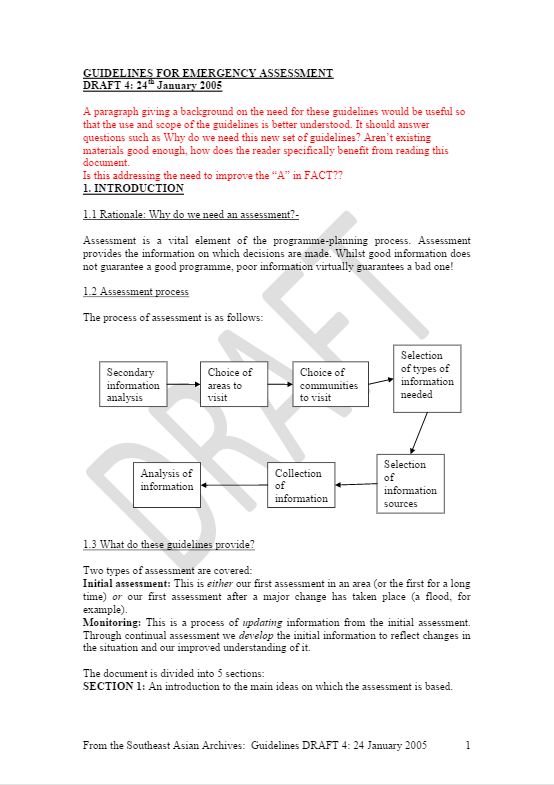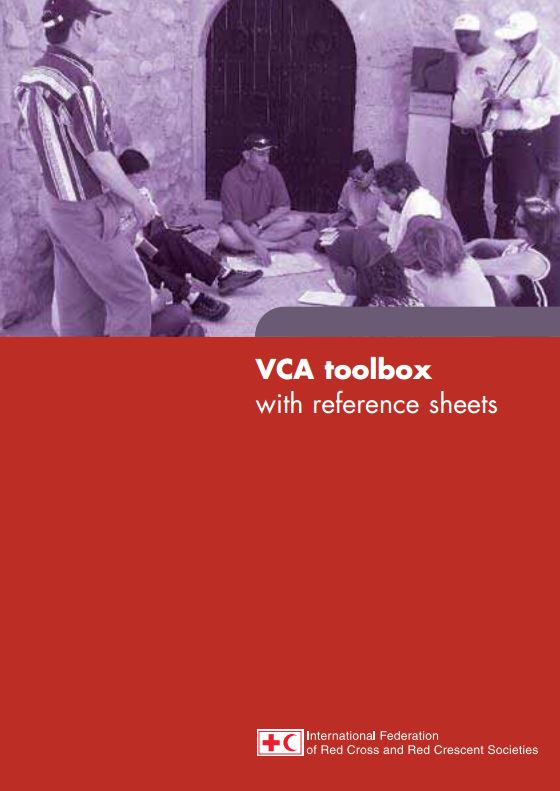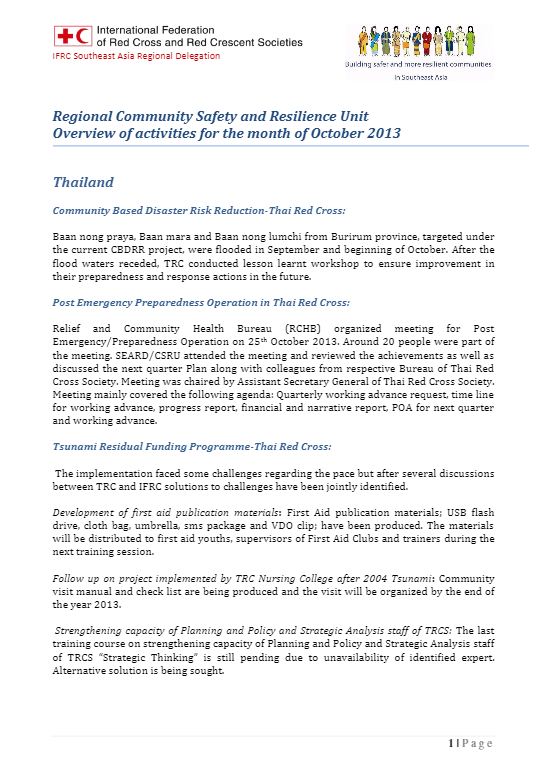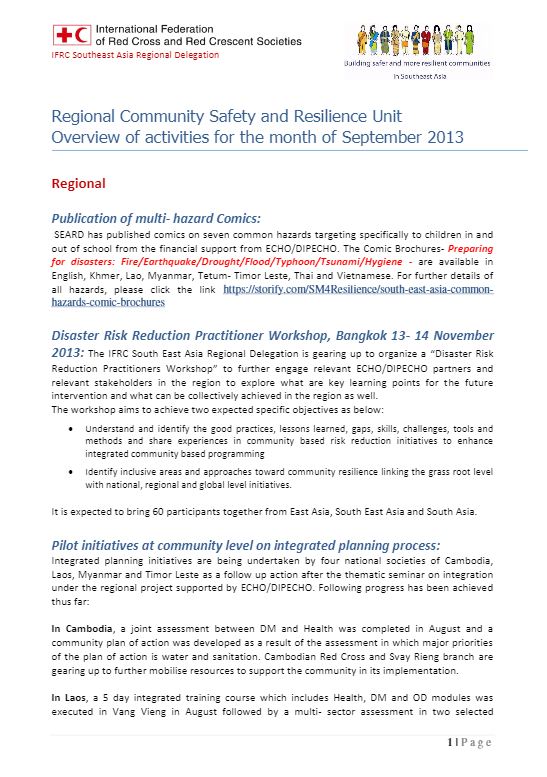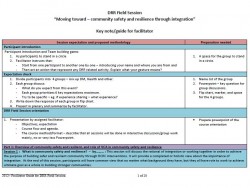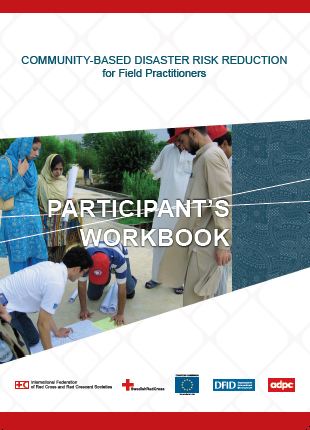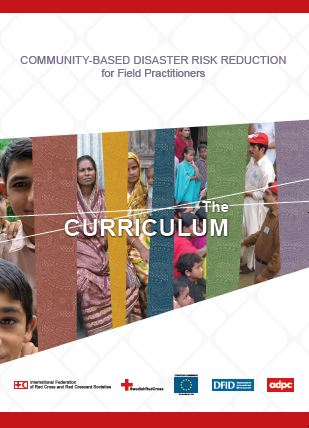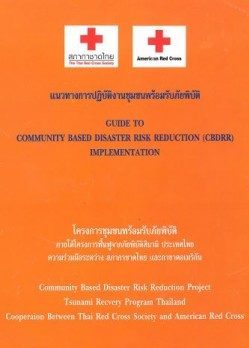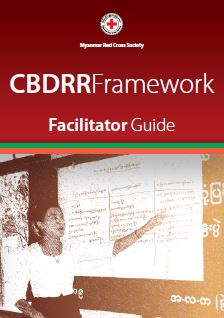VCA toolbox with reference sheets
Purpose:
This toolbox provides a detailed explanation on how to undertake the research part of a VCA. It will help you to choose the right tools to suit your purpose and describes when and how to use them and what to do with the information collected.
It begins with a general discussion on the different research approaches and their usage. It also explores related issues such as participation, reliability, validity and bias, which have an impact on how you carry out the research and the quality of the information you get from it.
Overview:
The tools include:
- Process Reference Sheets (PRS), which provide instruction on how to use specific processes when working with data.
- Research Reference Sheets (RRS), which guide you through the implementation of the different investigative tools.
- Methods Reference Sheets (MRS), which outline the different strategies and techniques for working with communities during meetings and workshops.
Usage: Guideline for implementation
Audience: National Society staff and volunteers
For the other series of VCA guides:
- For What is VCA? click here What is VCA?
- For How to do a VCA, click here How to do a VCA
- For VCA training guide, click here VCA Training guide
- For VCA lesson learnt and recommendations, click here Lessons and recommendations
- For VCA practical guide step by step, click here English version size 5 MB, Burmese version size 4 MB, Lao language size 1 MB, Khmer size 4 MB
![]()
Facilitator Guide for DRR Field Session
Purpose:
This facilitator guide details the DRR field session implementation. The guide offers details of the purpose of each of the session, leading questions and materials/power point presentation needed for each of the session.
Overview:
Part 1: Overview of community safety and resilient, and role of VCA (Vulnerability and Capacity Assessment) in community safety and resilience
- Session 1 : What is community safety and resilience?
- Session 2: Step by step process for community safety and resilience
- Session 3 : Key terminologies
- Session 4 : Framework for community safety and resilience
- Session 5 : Introduction to VCA and its role in community safety and resilience
- Session 6 : CCA, DRR, and Health
Part 2 : Using VCA to promote integration toward safer and resilient community
- Session 7 : Preparation for actual field work (data collection)
- Session 8 : Initial analysis and systematizing information (data analysis)
- Session 09 – Risk Ranking (data analysis)
- Session 10: Risk and vulnerability analysis or problem tree (data analysis)
- Session 11: Converting problem tree to objective tree (transforming V to C or Risk reduction programming )
- Session 12: Transforming V to C (transforming V to C or Risk reduction programming )
- Session 13: Resourcing the action plan (transforming V to C or Risk reduction programming )
- Session 14: Compiling the action plan (transforming V to C or Risk reduction programming )
Usage: Guidance for project implementation
Audience: Technical staff, Communication staff, Volunteers
![]()
Community-Based Disaster Risk Reduction for Field Practitioners – Participant’s Workbook
Purpose:
The series provide the DRR practitioners with practical guidance on how to plan and implement CBDRR programmes with a particular focus on training of CBDRR practitioners.
Overview:
Each of the 5 modules are equipped with learning objectives and sessions.
- Module 1: Introduction to the Red Cross Red Crescent World, click Module 1, size 0.5 MB
- Module 2: A framework for reducing risks, click Module 2, size 0.22 MB
- Module 3: CBDRR Process, click Module 3, size 0.57 MB
- Module 4: Documenting good practices and lessons learned in CBDRR, click Module 4, size 0.03 MB
- Module 5: Advocacy for sustaining CBDRR programs, click Module 5, size 0.06 MB
Usage: Guidance for project implementation
Audience: Technical staff, Volunteers
The CBDRR guides are available in series of:
- For CBDRR curriculum, click, Curriculum
- For CBDRR facilitator’s guide, click Facilitator’s Guide, size 7 MB
- For CBDRR training kit, click Training Kit, size 6 MB
![]()
Community-Based Disaster Risk Reduction for Field Practitioners – Curriculum
Purpose:
The series provide the DRR practitioners with practical guidance on how to plan and implement CBDRR programmes with a particular focus on training of CBDRR practitioners.
Overview:
The curriculum discusses about:
- Why community-based disaster risk reduction
- Community-based disaster risk reduction and the IFRC
- Course objectives, content, participant and schedule
Usage: Guidance for project implementation
Audience: National Society leadership, Technical staff, Volunteers
The CBDRR guides are available in series of:
- For CBDRR facilitator’s guide, click Facilitator’s Guide, size 7 MB
- For Participation work book, click Participant’s Workbook, size 11 MB
- For CBDRR Training Kit, click Training Kit, size 6 MB
![]()
Manual for CBDRR (in Thai language)
Purpose:
Overview:
Usage: Training
Audience: Technical staff
For the rest of manual, see:
- For Manual Part 2, click here Part 2, size 6 MB.
- For Manual part 3, click Part 3, size 3 MB.
- For Manual Part 4, click Part 4, size 21 MB.
- For Manual Part 5, click Part 5, size 5 MB.
- For Manual Part 6, click Part 6, size 8 MB.
![]()
Community Based Disaster Risk Reduction Framework Facilitator Guide
Purpose: The purpose of this ‘Facilitator Guidebook’ is to help the Course Coordinator deliver and document consistently high-quality CBDRR training courses. The package contains supporting documents aim to provide practical advice and forms.
Overview: The course curriculum consists of 2 core modules (Module 2-3). Furthermore, there is the optional Module 4 which is only being taught during a ToT as well as the introductory module “Understanding the Basics” which is only conducted during the standard CBDRR Training. In the next paragraphs, all 4 Modules are shortly presented:
- Module 1: Understanding the Basics: introduces the participants to the basics of CBDRR implementation of MRCS, general aspects of CBDRR in the context of Myanmar.
-
Module 2: Implementing the Program: introduces the participants to the 9 CBDRR steps that are followed by MRCS when implementing community- and school-based programs and key points
-
Module 3: Ensuring Sustainability: introduces the participants to two aspects that are often forgotten when it comes to program implementation
-
Module 4: Being a Facilitator:introduces the participants to facilitation skills and some exercises are carried out that willhelp the participants to be a facilitator of the course themselves in the end.
Usage: Guidance for project implementation
Audience: Technical staff, Communication staff, Volunteers
For Burmese version, click here Burmese/Myanmar version, file size: 2.4 MB
Myanmar Red Cross Society Community Based Disaster Risk Reduction series consists also of:
- Community Based Disaster Risk Reduction Manual
- Community Based Disaster Risk Reduction Step-by-Step Methodology
- Community Based Disaster Risk Reduction Framework Participants Handbook
![]()


